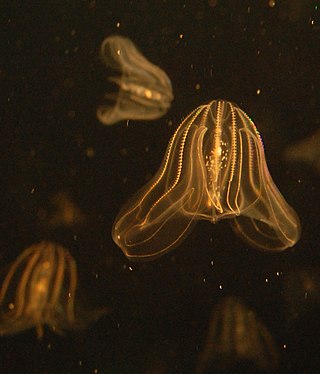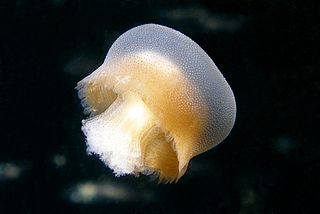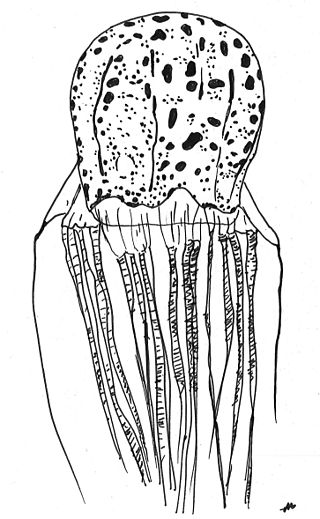
George Gershwin was an American composer and pianist whose compositions spanned popular, jazz and classical genres. Among his best-known works are the orchestral compositions Rhapsody in Blue (1924) and An American in Paris (1928), the songs "Swanee" (1919) and "Fascinating Rhythm" (1924), the jazz standards "Embraceable You" (1928) and "I Got Rhythm" (1930), and the opera Porgy and Bess (1935), which included the hit "Summertime".

Ira Gershwin was an American lyricist who collaborated with his younger brother, composer George Gershwin, to create some of the most memorable songs in the English language of the 20th century. With George, he wrote more than a dozen Broadway shows, featuring songs such as "I Got Rhythm", "Embraceable You", "The Man I Love" and "Someone to Watch Over Me". He was also responsible, along with DuBose Heyward, for the libretto to George's opera Porgy and Bess.

Rhapsody in Blue is a 1924 musical composition for solo piano and jazz band, which combines elements of classical music with jazz-influenced effects. Commissioned by bandleader Paul Whiteman and written by George Gershwin, the work premiered in a concert titled "An Experiment in Modern Music" on February 12, 1924, in Aeolian Hall, New York City. Whiteman's band performed the rhapsody with Gershwin playing the piano. Whiteman's arranger Ferde Grofé orchestrated the rhapsody several times including the 1924 original scoring, the 1926 pit orchestra scoring, and the 1942 symphonic scoring.

Box jellyfish are cnidarian invertebrates distinguished by their box-like body. Some species of box jellyfish produce potent venom delivered by contact with their tentacles. Stings from some species, including Chironex fleckeri, Carukia barnesi, Malo kingi, and a few others, are extremely painful and often fatal to humans.
"Summertime" is an aria composed in 1934 by George Gershwin for the 1935 opera Porgy and Bess. The lyrics are by DuBose Heyward, the author of the novel Porgy on which the opera was based, and Ira Gershwin.

Chrysaora is a genus of jellyfish, commonly called the sea nettles, in the family Pelagiidae. The origin of the genus name Chrysaora lies in Greek mythology with Chrysaor, brother of Pegasus and son of Poseidon and Medusa. Translated, Chrysaor means "he who has a golden armament."

Malo is one of a genus of box jellies in the family Carybdeida in the Phylum Cnidaria. It has four known species, three of which were described by the Australian marine biologist Lisa-Ann Gershwin. The genus was discovered in 2005. Many of the species are known for their paralytic and deadly affect. Many species in the Malo genus are very small and hard to capture and study. Many species of Malo have been captured on the Western and Eastern cost of Australia. Malo appear to be solidarity jellies.

Malo kingi or the common kingslayer is a species of Irukandji jellyfish. It was first described to science in 2007, and is one of four species in the genus Malo. It has one of the world's most potent venoms, even though it is no bigger than a human thumbnail. As an Irukandji, it can cause Irukandji syndrome, characterized by severe pain, vomiting, and rapid rise in blood pressure.
Csiromedusa medeopolis is a species of hydrozoan described in 2010. It was discovered in the estuarine waters of the River Derwent near to the Commonwealth Scientific and Industrial Research Organisation's Marine and Atmospheric Research branch in Hobart, Tasmania, Australia. C. medeopolis has been described as presenting a new family and genus as well as species.

Bolinopsidae is a family of ctenophores.
Ocyropsidae is a family of ctenophores.

Carukiidae is a family of box jellyfish within the Cubozoa class. Carukiidae can be easily classified by their lack of cirri clumps inside the cubozoan stomach, as well as the size and the placement of their nematocysts.

Limnomedusae is an order of hydrozoans.

Bazinga is a genus of rhizostome jellyfish with only one known species, Bazinga rieki, found off the central eastern coast of Australia.

Alatina is a genus of box jellyfish within class Cubozoa. It is the largest of the three known genera in the family Alatinidae, and the only one which is not monotypic. It contains the following ten species:

Chirodectes is a very rare, monospecific genus of box jellyfish in the family Chirodropidae.

Chiropsalmus is a genus of box jellyfish in the family Chiropsalmidae.

Bolinopsis is a genus of ctenophores belonging to the family Bolinopsidae.

Chiropsellidae is a family of venomous box jellyfish within the class Cubozoa.
Chiropsella bronzie is a species of box jellyfish. It is considered much less of a threat to humans than some of its relatives. The species was described in 2006, and is one of four species in the genus Chiropsella. Chiropsella bronzie can be found in shallow waters off the coast of Queensland, Australia.














